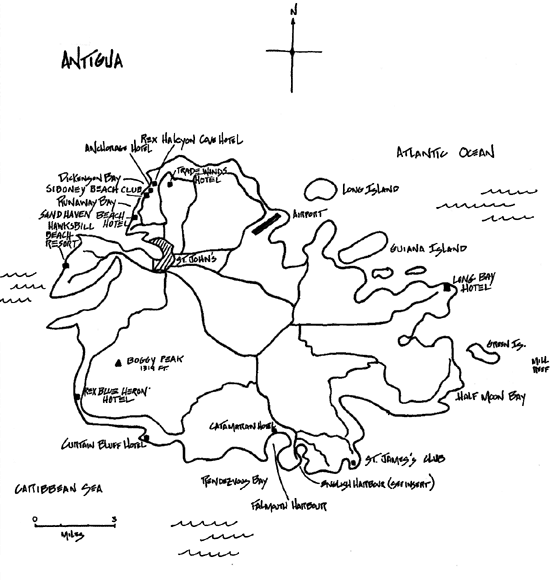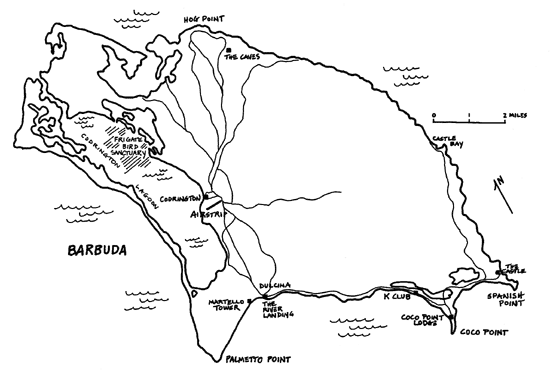|
|

Antigua does have its merits, however. There are many wonderful beaches (the tourist office claims 365 - does the mud in St. John's Harbour count as one?), some rather nice resorts, including a good array of moderately priced beachfront hotel options, a dry climate with constant trade winds, a happening yachting scene, great British historic sights, and an international airport where a number of airlines fly in nonstop. Antigua is also the largest of the Leeward Islands, covering an area of about 108 square miles. It's just that with all the other choices in the Caribbean, why deal with attitude, lots of tourists, bad roads, and an island that really isn't all that pretty? Unless, of course, it's Sailing Week (described in detail in the book). Being a major hub in the Caribbean transportation wheel and a big resort destination, Antigua attracts all kinds of travelers. Americans, Brits, Canadians, and Germans pour in on jumbo jets. Once on the island, most of them head to the resorts on the western and southern coasts, while the yachty set heads for English Harbour, one of the primary boating centers in the Caribbean. A select few with bulging wallets hop over to Barbuda, where a pair of extravagantly priced resorts and long deserted beaches (and little else) are found. But Antigua's modern cruise-ship dock lures big ships almost daily, and the swarms descend into St. John's, creating a shopping frenzy that overwhelms the little town and trickles into Nelson's Dockyard at English Harbour. With all of this commotion, there are a lot of options for the visitor, and Antigua may appeal to those who, if they are not sailors, like the activity and variety the island offers.
|
  |
|
|
